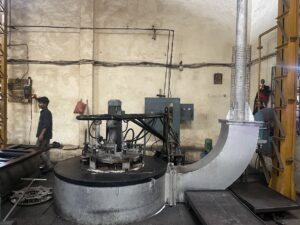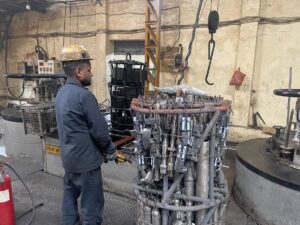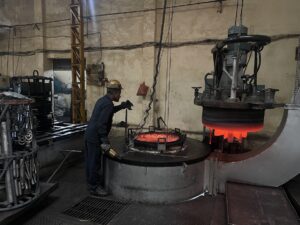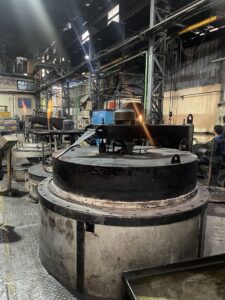Pit furnace heat treatment is a specialized process used for heat-treating materials like metals and alloys. Pit furnaces are vertical furnaces with an underground or partially buried design. They’re commonly used for large or long components, such as shafts, rods, tubes, or other parts that are challenging to handle in horizontal furnaces.
Here’s an overview of pit furnace heat treatment:
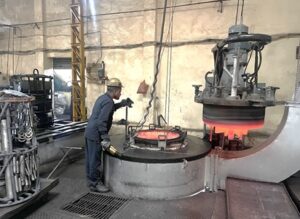 Key Features of Pit Furnaces
Key Features of Pit Furnaces
- Vertical Orientation:
- The furnace is built vertically, allowing parts to be suspended from the top. This minimizes warping and distortion for long components.
- Buried Construction:
- The heating chamber is below ground level, which saves space and enhances thermal efficiency by reducing heat loss.
- Temperature Control:
- Advanced systems allow precise control of temperature for processes such as annealing, carburizing, normalizing, tempering, and stress relieving.
- Inert Gas Atmosphere:
- For some treatments, inert gases (like nitrogen or argon) or controlled atmospheres (like carburizing gases) can be introduced to prevent oxidation and improve surface properties.
Heat Treatment Processes in Pit Furnaces
Pit furnaces can handle a variety of heat treatments depending on the material and requirements:
- Annealing:
- Softens the material, enhances ductility, and improves machinability by heating and slow cooling.
- Carburizing:
- Introduces carbon into the surface of steel parts to improve surface hardness while retaining core toughness.
- Normalizing:
- Refines the grain structure and enhances the mechanical properties by heating above the critical temperature and air cooling.
- Hardening:
- Achieves increased hardness and wear resistance through controlled quenching after heating.
- Tempering:
- Relieves internal stresses and reduces brittleness in hardened components by reheating to a lower temperature.
Advantages of Pit Furnaces
- Capacity for Long Components: Ideal for parts that are difficult to treat in horizontal furnaces.
- Uniform Heating: Heat is evenly distributed due to excellent insulation and temperature control.
- Custom Atmospheres: Tailored atmospheres improve surface characteristics and minimize oxidation.
- Energy Efficiency: Underground design helps retain heat.
Applications
Pit furnace heat treatment is commonly used in industries like:
- Automotive: Treating crankshafts, camshafts, and other long engine parts.
- Aerospace: Heat-treating long turbine blades and shafts.
- Oil and Gas: Treating pipes, drill strings, and tubular components.
- Heavy Machinery: Components like rollers, cylinders, and rods.
Let us know if you need help with a specific process or more details about equipment!



